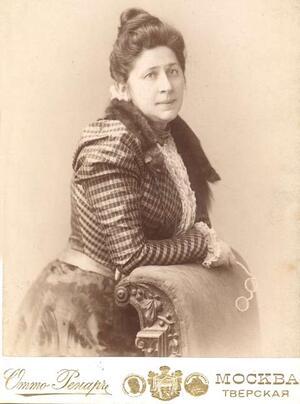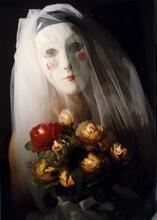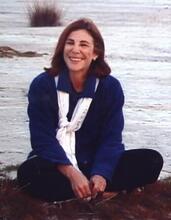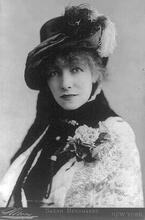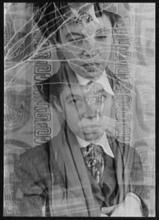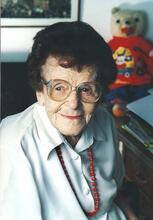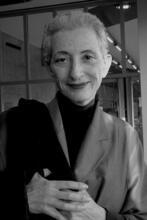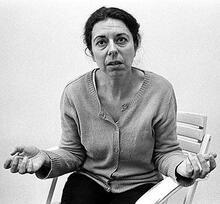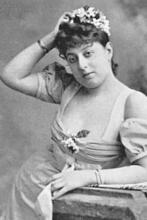Rashel Mironovna Khin
Rashel Khin attended a Moscow gymnasium before beginning her studies, first in midwifery in St. Petersburg and then literature at the Sorbonne. Khin was a translator, short story writer, and playwright, whose works were performed at Moscow’s Maly Theater. She wrote about genteel, acculturated Jews torn between a longing for status and a responsibility to their devout, impoverished co-religionists. When she was unable to obtain a get (Jewish divorce) from her husband, Solomon Feldshtein (with whom she had a son), she converted to Catholicism, which dissolved the marriage. She later married Jewish lawyer Onissim Goldovsky, who had to convert to marry her. She fled to France after the 1905 Revolution but returned in 1914 pledging involvement in the political experiment sweeping Russia.
Rashel Khin was the first Jewish woman to publish major works in the Russian language, while her famed gatherings of Russia’s intellectual elite launched her as a “salon Jewess” of the East. She was encouraged in her youth by the classic Russian novelist, Ivan Turgenev (1818-1883), and her oeuvre includes short stories and plays, two of which were staged at Moscow’s celebrated Maly Theater. The salons she hosted at her Moscow apartment and country estate in Katino made her the toast of Imperial Russia. She entertained philosophers and jurists (e.g. Anatoli Koni, 1844-1927), artists, and literary figures (e.g. the great Leo Tolstoy, 1828-1910, and critic Nikolai Storozhenko, 1836-1906).
Like her counterparts in the West—Rahel Varnhagen and Dorothea Mendelssohn Schlegel—Khin presided over a coterie of women and men, Jews and gentiles, gathered together for a social and intellectual event. As a wealthy, educated, and cultivated Jewish woman, Khin created an environment that fostered social mingling of Jews and gentiles of an order largely unprecedented in the Russian Empire.
Family & Education
Rashel Khin was born on March 9, 1863 to Rebekka Emanuilovna and Miron Markovich (d. 1897), an affluent member of the Jewish merchant class. A move to Moscow from the Pale of Settlement—the city of Gorki in the Mogilev province (present-day Belarus)—allowed Khin to attend a girls’ gymnasium, where she received a first-class European education fit for a daughter of Russia’s privileged class. Imbued with the Romantic ideal to “go to the people,” she headed to St. Petersburg with a plan to enroll at the “Women’s Medical Courses” in order to prepare for a career in midwifery. Khin attended the courses only briefly, since they were shut down by order of the Minister of War a year after she arrived. She then took up study of the humanities at the Collège de France and the Sorbonne in Paris. She completed a three-year course in history and literature while being mentored by Ivan Turgenev.
Literary Accomplishments
By the 1880s, when she met Turgenev in Paris, Khin was entering the literary arena. Although her mentor did not live to witness her professional success, the list of her literary achievements is impressive. She debuted in 1881 in the magazine Drug zhenshchin (Friend of Women) and during the next two decades published fiction in such mainstream Russian journals as Vestnik Evropy (Messenger of Europe) and in the Russian-Jewish journal Voskhod (Dawn). According to the literary critic Maxim D. Shrayer, “her fiction is stylistically timid [but it] articulated the anxieties of the Russian-Jewish intelligentsia and one-sidedly critiqued the Jewish nouveaux riches.”
Moreover, Khin translated into Russian the works of such notables as Gustave Flaubert (1821-1880), Guy de Maupassant (1850-1893), George Sand (1804–1876), and Émile Zola (1840–1902)—the latter she met in person, as evidenced by his signed calling card in her archival holdings. Her work was regularly reviewed in the Russian press and the Russian-Jewish press. Two collections of her short stories appeared in print, and two of her five plays appeared on the Moscow stage.
Forgotten during the Soviet era, Khin was among the best-known Jewish woman in nineteenth-century Russian letters. The 2017 publication of an anthology of her writings—notwithstanding the title, Ne ko dvoru (The misfit), which is derived from one of her stories—provides a new generation of Russian readers access to her important work.
Khin’s Complicated Relationship to Judaism and the Jewish People
Throughout her life, Khin maintained a complicated relationship to Judaism and the Jewish people. She divided the Jews of Imperial Russia into “aristocrats” and “plebians.” The former—of which she considered herself—were educated at the finest gymnasia and universities of Russia or Europe, were schooled in the manners of the West, easily blended with the intellectual and cultural elite, and resided, so far as Russia was concerned, within its interior. Those of the latter were ignorant of the civilizing ways and ideas of modernity, vulgar in dress and behavior, a conspicuous embarrassment to their refined brothers and sisters, and resided in the Pale of Settlement.
Khin’s first and second marriages to “aristocratic Jews” demonstrate the intricacies of Jewish identity in nineteenth-century Russia. In 1881, Khin married her first husband, Solomon Feldshtein, a Jewish attorney. The two had a son, Mikhail. The match went sour within a few years, and Khin wanted out of the marriage. When she asked Feldshtein for a get (Jewish divorce), he refused. Since Jewish law prohibits a woman from initiating divorce, Khin sought another exit strategy. She knew that neither the Russian state nor the Catholic church recognized marriages between Jews and Catholics. So she took a dramatic step. She converted to Catholicism, thereby invalidating her marriage to Feldshtein.
Ironically, Khin’s conversion would then precipitate the baptism of her second husband, Onissim Borisovich Goldovsky (1865-1922), a Jewish lawyer whom she met in 1898. The two fell in love and wished to marry. Since her conversion made it impossible for Khin to marry another Jew, Goldovsky converted (some say to Protestanism) in 1900. Theirs was an intermarriage of the most bizarre sort. Nevertheless, as restrictions against the Jews mounted, leading to antisemitic violence, Khin and Goldovsky acted on behalf of those from whom they had ostensibly separated, including especially “the plebians.”
Though Khin afforded her husband intellectual compatibility and social opportunity (he met Leo Tolstoy at one of her salon meetings), Goldovsky strayed from the marriage early on, carrying on an affair with Lea Luboshutz (1885-1965) until his death in 1922. Twenty-two years younger than Khin, Luboshutz was a so-called “plebian” Jew from Odessa whose virtuosity on the violin catapulted her to the concert halls of New York. Goldovsky was not only Luboshutz’s lover but also her patron, and he fathered three of her children. He divided his residence between the Moscow apartments of his wife and lover. At first, Khin accepted the arrangement and fended off accusations that her husband was being unfaithful. Later in life, she reversed course and added marginal notes in her diary, indicating that her husband had betrayed her.
Final Years
Khin and Goldovsky (and Luboshutz) fled Russia for France shortly after the Revolution of 1905. They returned to their homeland in 1914, pledging involvement in the political experiment then sweeping Russia. Upon her return, Khin got swept up in the daily struggle for survival. Her writing became circumscribed to correspondence and the daily diary she kept until 1917. She died on December 28, 1928.
Posthumous Fame
In a strange historical twist, Khin became known to a new generation in 1975, when the Soviet musician David Tukhmanov composed a pop hit to a 1913 poem about her salon. Drawing on verse composed by regular guest, Max Voloshin (1877-1932)—whose first line in English reads, “In my mind, I enter your study”—the song describes the rarefied intellectual ambience of Khin’s gatherings.
Selected Works
Archival Resources
Khin’s papers (including a diary and memoir) are at RGALI (Russian State Archive of Literature and Art), Moscow, fond 128, opis 1 and 2.
Khin’s letters to Turgenev appear in Pis’ma Turgenevu (1909): 207–210. His short letters to her are found among her archival holdings: RGALI, f. 128, op. 1, d. 107 (Apr. 17–Aug. 19, 1881).
English Translation
Rashel Khin, excerpt from “The Misfit” (Ne ko dvoru, as appeared in Siluety). Translated from Russian by Emily Tall. In Voices of Jewish-Russian Literature: An Anthology. Edited by Maxim D. Shrayer. Brookline, MA: Academic Studies Press, 2018: 72-76.
Khin’s writings below appear in Russian. (Other bylines: R.M-khin; R.F__shtein)
Anthology
Ne ko dvoru: izbrannye proizvedeniya (The misfit: selected works). Edited by M.B. Averukh with an introduction by Lev Berdnikov. St. Petersburg: Aletejja, 2017.
Books
Siluety (Silhouettes). Moscow: T-vo skoropechatni A.A. Levenson, 1895.
Pod goru (Downhill: Short Stories). Moscow: 1900 (dedicated to Turgenev).
Plays
Okhota smertnaia (Desire to die). In Prizyv (appeal) Moscow: 1897.
Porosl (Young sprouts). Moscow: 1905 (staged at the Maly Theater; on women’s emancipation).
Pod sen’iu penatov (Under the protection of Penates). Moscow: 1907.
Nasledniki (Heirs). Moscow, c. 1911 (staged at the Maly Theater).
Ledokhod (Drifting ice). Moscow: 1917.
Selected Short Stories and Articles (arranged chronologically)
“Iz storony v storonu” (From side to side). Drug zhenshchin (1883): 2–3, 4–6. (about her medical studies)
“Sud’by russkoi devushki” (The fate of a Russian girl). Drug zhenshchin 2 (1883).
“Neskol’ko slov o Turgeneve” (A few words about Turgenev). Drug zhenshchin 2 (1884).
“Ne ko dvoru" (The misfit). Voskhod (1886).
“Makarka.” Voskhod 4 (1889).
“Natasha Krinitskaia.” Russkoe obozrienie 6 (1891).
“Antoinette” (from French of L. Halevi). Russkie vedomosti 146 (1891).
“In Defense of Jews” (from the French of Émile Zola) and “Russia” (from the French of Georg Brandes). Pomoshch’ evreiam. St. Petersburg: 1891.
“Ustroilas” (She made her place). Vestnik Evropy (1896).
“Tifena” (Depths). Russkie vedomosti 356 (1896).
“Mechtatel” (Dreamer). Sbornik v pol’zu nachal’nykh evreiskikh shkol. St. Petersburg: 1896.
“Elka.” Russkie vedomosti 295 (1898).
“Odinoschestvo” (Solitude). Vestnik Evropy (1899).
“Hamlet” (from the French of George Sand). Sbornik na pomoshch’ uchashchimsia zhenshchinam. Moscow: 1901.
“Fenomen” (Phenomenon). Mir bozhii (1903).
“Pamiati kniazia A.I. Urusova” (Memory book of A.I. Urosov). Kniaz’ Aleksandr Ivanovich Urusov. Vols. 2 and 3. Moscow: 1907.
“Poslednie gody N.I. Storozhenko” (The final years of N. I. Storozhenko). Pamiati N.I. Storozhenko. Moscow: 1909.
“Pamiati starogo druga” (“Memories of an old friend). Pamiati A.F. Koni. Leningrad–Moscow: 1929.
Balin, Carole. “Insider-Outsider among the Russian Cultural Elite: Rashel Mironovna Khin (1861–1928).” In To Reveal Our Hearts: Jewish Women Writers in Tsarist Russia. Cincinnati: Hebrew Union College Press, 2000, 84–123.
Berdikov, Lev. Evrei v livreiakh: literaturnye portrety. Moscow: Chelovek, 2009. (includes a biographical entry on Khin).
Wolf, Thomas. The Nightingale’s Sonata: The Musical Odyssey of Lea Luboshutz. New York: Pegasus Books, 2019.

